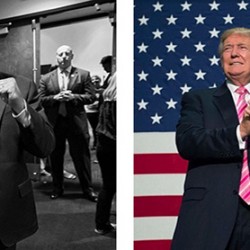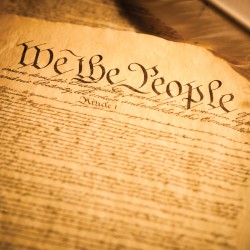The Reach of Facebook
A powerful social platform is engaging citizens in the political process.
When On Wisconsin last caught up with Katie Harbath ’03 in 2007, she was navigating the burgeoning realms of social media and digital strategy as the deputy e-campaign director for Republican Rudy Giuliani’s 2008 presidential campaign. She also had no idea what the future had in store for her.
“I don’t know what my next job will be because I don’t think it exists yet,” she said then. Indeed, her current position — as Facebook’s global politics and government outreach manager — didn’t exist until she created it in May 2013.
Following the Giuliani campaign, Harbath developed digital strategy for a public affairs firm in Washington, D.C., and worked as the chief digital strategist for the National Republican Senatorial Committee during the 2010 election cycle. Shortly afterward, Facebook approached her to become a manager for policy, through which she consulted with top Republican candidates — and ultimately, Mitt Romney — for the 2012 presidential cycle, advising them on how to utilize Facebook most effectively for their respective campaigns. Harbath then sought to globalize her outreach; she now consults with political figures from Australia to Brazil and from India to Canada.
On Wisconsin asked her to elaborate on the converging worlds of social media and politics.
Which global elections do you focus on?
They’re mostly [countries] that have either presidential or prime minister [elections], where the head of state is just getting elected. They’re the main ones we’re focusing on, but we’re trying to do things to help everyone in between, as well. We’re looking at what conversations are happening on Facebook around the election, which issues people are talking about the most, and which candidates they are talking about the most. For the last three elections in the U.S., we were showing Facebook users a message at the top of their newsfeed letting them know it was Election Day. Now, we started doing the same thing in India to remind them it’s Election Day and get them out to vote.
Have you seen an uptick in voting rates and participation since Facebook started these efforts?
We absolutely have in the U.S. We did a study with Nature, working with researchers at the University of California, after the 2010 election. More people went to the polls because they saw that their friends shared [on Facebook] that they had voted. Researchers found that it did increase turnout.
Is social media strategy still evolving?
It is. I think the biggest change for campaigns is how quickly everything is going to mobile. We have more people who use Facebook on a mobile device every day than they use a desktop. So you have to make sure the types of content you’re putting up and the links where you’re driving people to websites are all a lot more mobile friendly.
In 2009, Campaigns and Elections named you a rising star of campaigning. At the time, you told them, “Campaigns have to learn to be more conversational.” What did you mean by that?
Facebook isn’t a platform where you can really just be posting things one way and not be engaging with fans and voters. The campaigns that are more successful are doing things like Facebook Q&As, where they allow their fans to ask them questions and they’re answering them right on their page. They’re having that conversation back and forth — they’re not just treating Facebook as a medium to push information out. I think politicians are a lot more comfortable now having these conversations online.
Is using Facebook a necessity now rather than a boost for campaigns?
I think so. We’re no longer at a point where we’re trying to convince people to be on Facebook. Now we’re to a point where we’re just trying to work with them to think through the types of content to [use] and creative ways to engage with fans. I would say the 2010 cycle is where it really started to shift. I think it just kept building on in 2012.
What are the primary benefits of using social media during campaigns?
Initially, it’s really about reaching out to fans and building up your name identification — getting that conversation going. Then it kind of moves into education — telling them where you stand on issues. Then it goes to the activation [stage] of getting volunteers, getting people to donate, and building up your email list. In the final phase, it’s really using it to help get people out to vote, and getting them out to vote for you.
Published in the Fall 2014 issue




Comments
No comments posted yet.